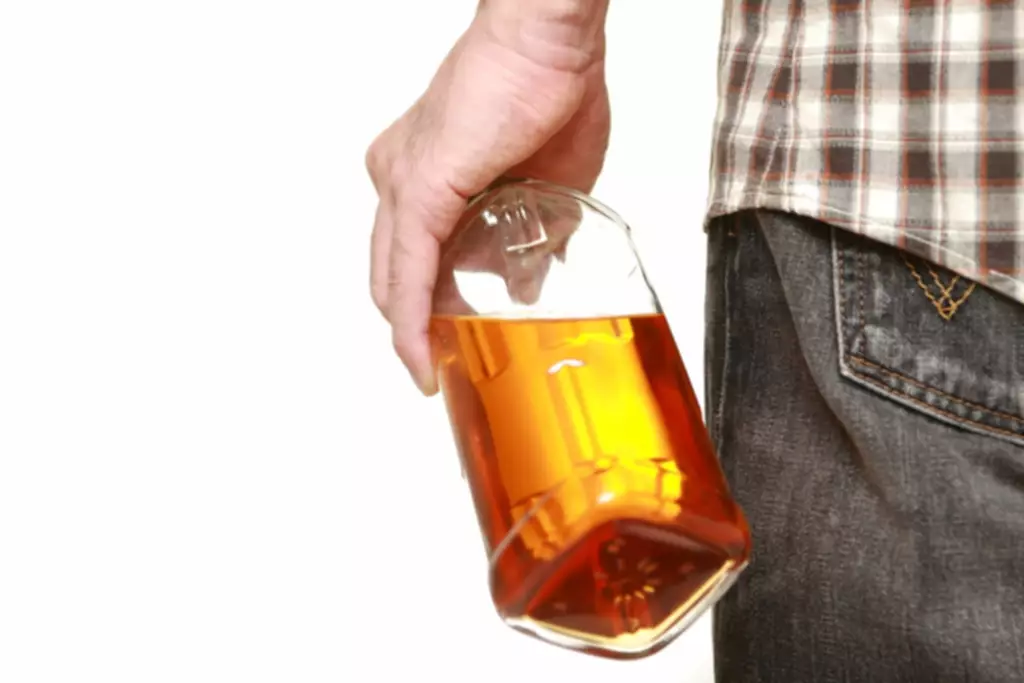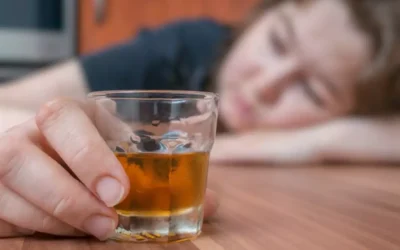America’s Best Addiction Treatment Centers 2022
Content
- Xylazine appears to worsen the life-threatening effects of opioids in rats
- Medications for Opioid Use Disorder Video
- Rehab Costs In Kansas
- FT recommends
- What is included in my trial?
- Center for Substance Abuse Treatment National Advisory Council; Notice of Meeting
- Alcohol and Drug Treatment Programs in Kansas
- What happens at the end of my trial?
Private health insurance is a viable payment option for the 150 million people in the United States who have one of these insurance policies. Most private insurance policies will cover rehab, though they vary in the copays, deductibles, and out-of-pocket expenses the policy holder is responsible for. Patients can consult their insurance company to determine exactly which costs are covered by private insurance and how much they will need to pay on their own. Patients can access evaluations and guidance in finding affordable treatment by talking with addiction counselors at any of the state’s addiction treatment centers.
- Meanwhile, the CDC has estimated that alcohol induced deaths rose to more than 52,000 in 2021, an increase of 34 percent.
- These low-income individuals can expect to have their rehab paid in full as long as they attend a facility that accepts Medicare or Medicaid.
- Somewhere in the neighborhood of 21 million Americans are drug or alcohol addicts.
- The incidence of this kind of co-occurring illness increased by 300,000 between 2018 and 2019, according to that same report.
- StartYourRecovery.org provides facility information using publicly available data from the Substance Abuse and Mental Health Services Administration and cannot independently verify the data.
- If your facility was listed in the ranking, click here to learn more about the licensing options.
Short-term inpatient rehab refers to programs that house and intensively treat patients for less than 30 days. Useful for complex or severe addictions, these types of programs are available at 12.8 percent of Kansas facilities. Called detox, the process of allowing addictive substances to leave their bodies in a safe and medically supervised context is an important step toward recovery. In Kansas, detox is available in every setting, including outpatient, inpatient, and hospital-based programs. Thanks to these multiple treatment and payment options, patients can usually find an affordable program that also meets their recovery needs within Kansas. StartYourRecovery.org provides facility information using publicly available data from the Substance Abuse and Mental Health Services Administration and cannot independently verify the data.
Xylazine appears to worsen the life-threatening effects of opioids in rats
They can also team with certified professionals to administer medication-assisted treatment. Change the plan you will roll onto at any time during your trial by visiting the “Settings & Account” section. Keep abreast of significant corporate, financial and political developments around the world. Stay informed and spot emerging risks and opportunities with independent global reporting, expert
commentary and analysis you can trust. Drug and alcohol addiction are responsible for an enormous amount of suffering and death in the United States.

12-step programs began with the founding of Alcoholics Anonymous almost 90 years ago, and continue today in several forms dedicated to substance abuse. Based on 12 principles, or steps, that participants follow, the goal of these programs is to provide a structured and community-based path toward a lasting recovery. 68.2 percent of facilities in Kansas assist patients in connecting with these programs, which can boost their chances of maintaining their recoveries.
Medications for Opioid Use Disorder Video
Our rankings are based on a survey of over 4,000 medical professionals and an analysis of the treatment centers‘ accreditation status. 52 percent of Kansas‘ facilities are private, nonprofit organizations, and 11.7 https://ecosoberhouse.com/ percent are run by local, county, or state governments. These organizations tend to drive down rehab costs, and often provide more resources for financially needy patients who need assistance affording rehab.

The emergency and referral resources listed above are available to individuals located in the United States and are not operated by the National Institute on Drug Abuse (NIDA). NIDA is a biomedical research organization and does not provide personalized medical advice, treatment, counseling, or legal consultation. Information provided by NIDA is not a substitute for professional medical care or legal consultation. Kansas‘ drug treatment programs offer both pros and cons to patients who wish to pursue recovery within the state. There are thousands of treatment facilities across the country and finding the right one for yourself or somebody you care about can be difficult. To try to help ease that search, Newsweek has partnered for the third consecutive year with global market research and datafirm Statista Inc. to rank the best U.S. treatment facilities focused on addiction.
Rehab Costs In Kansas
A National Institute on Alcohol Abuse study even found that 12-step programs delivered a slightly higher 8-year abstinence rate than did formal drug rehab. You can now filter our treatment results to show you tailored rehab programs that fit your exact needs. Just choose the type of treatment you are looking for, a payment type such as private insurance or low cost, and any specialized treatment approach you are interested in. Click submit and we will provide a list of alcohol and drug rehab centers that match your criteria.
- They can also team with certified professionals to administer medication-assisted treatment.
- To try to help ease that search, Newsweek has partnered for the third consecutive year with global market research and datafirm Statista Inc. to rank the best U.S. treatment facilities focused on addiction.
- Most treatment centers accept cast or other self-pay methods, but many patients cannot afford these expenses out-of-pocket.
- In Kansas, just about half of facilities offer this type of free service to needy patients.
- A National Institute on Alcohol Abuse study even found that 12-step programs delivered a slightly higher 8-year abstinence rate than did formal drug rehab.
If your facility was listed in the ranking, click here to learn more about the licensing options. Emergency department (ED) clinicians are in a unique position to interact with people struggling with opioid addiction… Kansas struggles with a drug problem that also plagues many other states, but does experience lower rates of addiction and overdose than most other states. Our goal is to offer people a single source of relatable, reliable information at any stage of their recovery journey. Support groups provide a space for getting social support, a sense of empowerment, and motivation from people who have faced — or are facing — similar challenges and circumstances. Counselors and therapists can help you identify factors that underly your substance use, to avoid triggers, to strengthen your motivation, and to navigate treatment options.
If you do nothing, you will be auto-enrolled in our premium digital monthly subscription plan and retain complete access for 65 € per month. Rehab describes structured programs designed to help people stop using drugs or alcohol substance abuse in older adults and learn to live a healthy life. Any changes made can be done at any time and will become effective at the end of the trial period, allowing you to retain full access for 4 weeks, even if you downgrade or cancel.
Successfully treating a dual diagnosis means providing patients with intensive and specialized services that address both illnesses. In Kansas, 38.5 percent of facilities provide these services for dual diagnosis patients. Kansas offers drug treatment services that encompass the entire recovery journey. Patients can find resources to help with assessment, treatment, aftercare, and more to better ensure a recovery that lasts. This is a relatively low acceptance rate that could present a challenge to Medicare recipients who wish to receive addiction treatment within the state. Sliding scale fees are costs that are adjusted based on a patient’s ability to pay.
FT recommends
The federal government provides health insurance for individuals who meet certain income thresholds. These low-income individuals can expect to have their rehab paid in full as long as they attend a facility that accepts Medicare or Medicaid. 77.1 percent of Kansas facilities accept Medicaid, while 29.1 percent of facilities accept Medicare. Patients who wish to get an accurate estimate of their treatment expenses can call their preferred treatment center to talk about their services and charges. Most treatment centers accept cast or other self-pay methods, but many patients cannot afford these expenses out-of-pocket. When it comes to receiving assistance with paying for their treatment, patients can explore the following options (among others) for affording their recovery.

According to the Centers for Disease Control’s National Center for Health Statistics, there were an estimated 106,622 drug overdose deaths in the U.S. last year, an increase of about 15 percent over 2020. Meanwhile, the CDC has estimated that alcohol induced deaths rose to more than 52,000 in 2021, an increase of 34 percent. Somewhere in the neighborhood of 21 million Americans are drug or alcohol addicts. The number of friends and family members who suffer with and because of them is much larger. The state has a residential bed utilization rate of just 82.4, indicating an availability of beds for patients who need prompt treatment for their addictions. SAMHSA and DEA are actively working to develop further guidance related to these changes.
What is included in my trial?
A much larger percentage offer free treatment (or minimal-cost treatment) to patients who cannot otherwise pay. In Kansas, just about half of facilities offer this type of free service to needy patients. According to a SAMHSA study, about 9.5 million Americans suffered in 2019 from a dual diagnosis – A mental illness and a substance use disorder. The incidence of this kind of co-occurring illness increased by 300,000 between 2018 and 2019, according to that same report.
- Kansas‘ drug treatment programs offer both pros and cons to patients who wish to pursue recovery within the state.
- Short-term inpatient rehab refers to programs that house and intensively treat patients for less than 30 days.
- In Kansas, 38.5 percent of facilities provide these services for dual diagnosis patients.
- If you do nothing, you will be auto-enrolled in our premium digital monthly subscription plan and retain complete access for 65 € per month.
- A much larger percentage offer free treatment (or minimal-cost treatment) to patients who cannot otherwise pay.
- These organizations tend to drive down rehab costs, and often provide more resources for financially needy patients who need assistance affording rehab.
Individuals with lower incomes, for example, will be charged less than those who have higher incomes. The goal of sliding scale fees is to make treatment affordable for all patients, regardless of their income. In Kansas, more than two-thirds of facilities offer this kind of adjustable fee schedule.
Long-term residential rehab refers to inpatient programs that provide intensive therapy and support to patients for longer than 30 days. In Kansas, 11.7 percent of facilities offer this type of service, which can support the recovery of patients who suffer from the most severe forms of addiction. Not every treatment center in Kansas charges the same rates, and not every patient requires the same services. As a result, rehab costs can vary based on factors such as where they receive treatment, which services they require, which payment options they choose, and more. This year we have listed the top 330 facilities, up from 300 last year, in 25 states.
- NIDA is a biomedical research organization and does not provide personalized medical advice, treatment, counseling, or legal consultation.
- Please contact us if you are the proprietor of a facility and have updates or corrections to site content.
- When it comes to receiving assistance with paying for their treatment, patients can explore the following options (among others) for affording their recovery.
- Successfully treating a dual diagnosis means providing patients with intensive and specialized services that address both illnesses.
